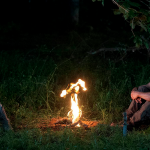Last week I watched what may have been my last episode of “Bunheads” ever. And I’m willing to admit – unabashedly – that the possibility of a future bereft of “Bunheads” is more than a little sad.
The hour-long ABC Family dramedy created by Amy Sherman-Palladino (of “Gilmore Girls” fame) aired its winter finale Monday, with no word from the network regarding the possibility of a second season. Though the show has only garnered a mediocre viewership compared to the network’s biggest hits, it’s a show with great potential that deserves a second season to expand its audience. As Time‘s tv critic James Poniewozik argues, “Bunheads” provides something that few other shows on television today offer: proof that small stories are worth telling, too.
You won’t find any zombies on “Bunheads,” no science teachers cooking meth, no serial killers, and none of the very wealthy ensconced in the Hamptons. Instead, you’ll find Michelle (Sutton Foster) and Fanny (Kelly Bishop), owners and instructors at a ballet school in Paradise, California, dealing with a small-business budget, zoning laws, performance spaces, and costumes, as well as quirky friends and occasional romantic encounters. You’ll find Sasha (Julia GoldaniTelles), Boo (Kaitlyn Jenkins), Ginny (Bailey Buntain), and Melanie (Emma Dumont), four teenage dancers who have been best friends from birth. Their big dramas include working part-time jobs, dealing with irresponsible parents, babysitting misadventures, unrequited crushes, and exams. Unlike other tv shows aimed at teens (ahem, “Glee”), the episodes aren’t pedantic lessons about bullying or texting while driving; no high-stakes plotline is necessary to force the viewer into caring about these characters. Amy Sherman-Palladino’s eye for drama in the everyday means that each of the stories is told as it should be, with all the emotion and whimsy that daily life naturally contains.
“Bunheads” is unique in other ways, too. It’s the only show on television offering eight strong female characters (besides the six mentioned above, there are bickering sisters Truly (Stacey Oristano) and Milly (Liza Weil)). This show definitely passes the Bechdel test (a work passes the test if it features at least two women who talk to each other about something other than a man – and only a small proportion of films pass). In fact, I’m not sure if “Bunheads” ever features two men talking to each other about something other than a woman – a feat that Sherman-Palladino has doubtless accomplished purposefully, with a wink and a grin.
Unlike “Glee” and “Smash,” the musical numbers in “Bunheads” aren’t designed to be sold on iTunes – they’re actually designed to contribute artistically to the show by furthering character and plot development. For example, in the dance to “Istanbul (Not Constantinople),” Sasha pours all her barely repressed fury towards her parents.
One can’t write about the merits of an Amy Sherman0-Palladino show without mentioning the dialogue, of course. Paced like the best of the fast-talking screwball comedies from the 1930s, the zippy banter on “Bunheads” is unlike the dialogue on any other show, filled with witty pop culture references and vocabulary words you usually don’t hear on television.
But perhaps my favorite aspect of “Bunheads” is the way it portrays female relationships, both among the teens and in the teen-adult interactions. Most teenage girls on tv fall into stereotypes: the diva, the lesbian, the cheerleader, the whore, the sidekick. It’s rare to find teen female protagonists who are nuanced characters. The girls on “Bunheads” are smart, hard-working, responsible, and ambitious – like Rory Gilmore, Sherman-Palladino’s most famous teen, they are far better role models for teen girls than you’ll typically find on tv. And their relationships are complex and real – they suffer petty jealousies and differences of opinion, but their loyalty to each other trumps those, just as their relationships with each other trump their relationships with boyfriends.
Their interactions with the younger of the two dance instructors, Michelle, are interesting, too. While Boo has a happy, stable family, the other three girls’ parents fail to be involved in their lives. Their parents are unreliable adults – in fact, Sasha’s parents literally abandon her. The girls begin to turn to Michelle as a mentor, a role she feels wildly unready and unsuited for, but fills whether she wants to or not. (One is reminded of all the absent and irresponsible adults on “Friday Night Lights,” and the way that Coach and Mrs. Taylor parented a whole town full of teens.)
Another unique feature of the show is the setting. Many tv shows about teens take place mostly at home and school, but “Bunheads” is set almost exclusively in the “third place” of the ballet studio. There, the girls find community and a sense of identity; there, they are challenged with the hard work and discipline required of ballerinas, demonstrating that teens are far less interested in being “entertained” than they are in being inspired to do great things, or in being a part of something bigger than themselves.
“Bunheads” is an important reminder about community, and what teens need from adults, and how much is at stake in the intimate moments and small stories that make up our everyday lives. It’s a delightful and whimsical look at relationships, with the best-written screwball dialogue around. It’s a show about real women, and about the fact that sometimes there is no better response to the unpredictable nature of life than to make something beautiful – a song or a dance. It’s a show that I, for one, hope gets a call-back.
Christ and Pop Culture previously covered “Bunheads” when it premiered.











